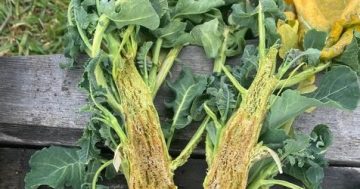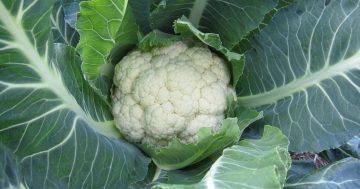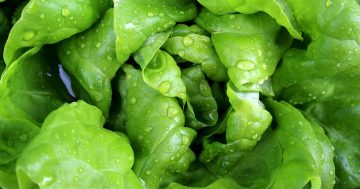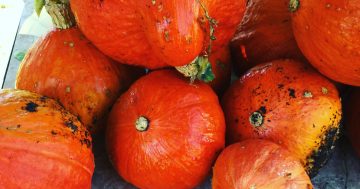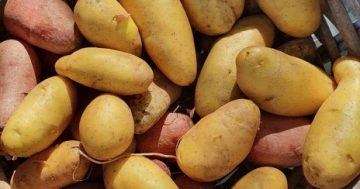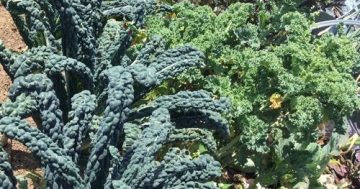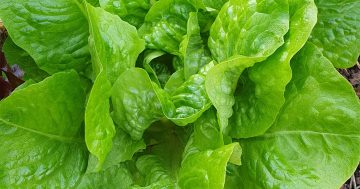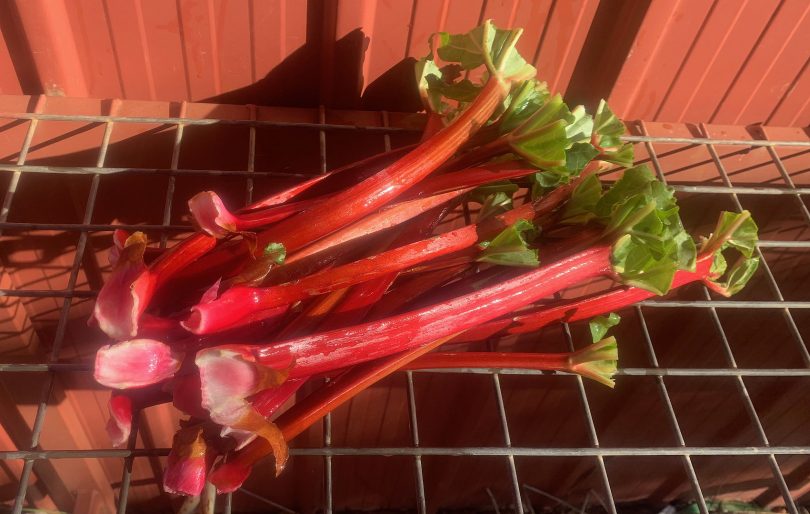
Fresh rhubarb is a delicious and easy addition to the vegetable garden. Photos: Joyce Wilkie.
Rhubarb crumble is such a winner. A delicious easy dessert, always welcomed especially if it comes with some thick cream or ice cream (or maybe even both!)
Lesser known but equally tasty are the savoury salsas and sauces you can make with this vegetable. With this in mind, I have baked plenty with just some orange juice and brown sugar and frozen it in packs to get me through the winter. Now I plan to divide some of my older plants to move into bare spaces in my perennial beds close to the house.
A well-grown rhubarb plant is a beautiful thing. The large, vibrant green, umbrella-shaped leaves and rich crimson stems make it a worthy addition to any garden even if you don’t eat it.
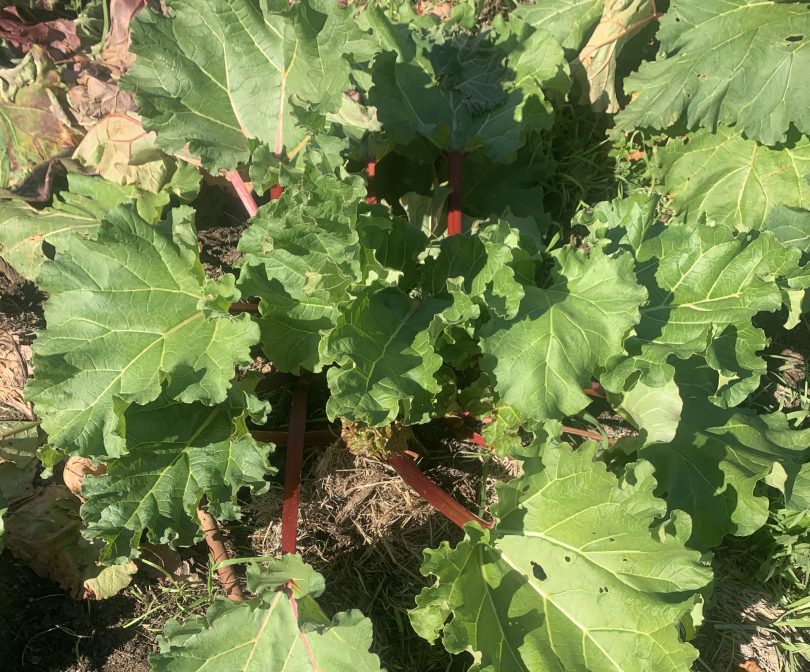
Rhubarb is an attractive garden perennial.
It is a non-invasive, perennial that gradually increases in size over a few years. It does well in both full sun and partial shade and as long as it gets well fed with some compost and blood and bone, or some well-rotted manure in the winter and regularly watered in the hot months, it will reward you both aesthetically and in the kitchen for years.
As the nights get colder and the days shorter the leaves and stems of rhubarb plants die back and the roots sleep until spring. Now is the time to feed, weed and mulch your plants. But before you do, you may want to dig a few up and divide them. It may take quite a bit of effort to get very large plants out of the ground.
I use an edging spade and it doesn’t matter if old roots are damaged in the digging process. Once out of the ground, use the edge of the spade or a sharp knife to cut the crown into individual sprouting clumps. Any dead growth should be removed along with large, old roots but make sure you keep a bit of healthy root attached, preferably with small feeder roots sticking out the sides.
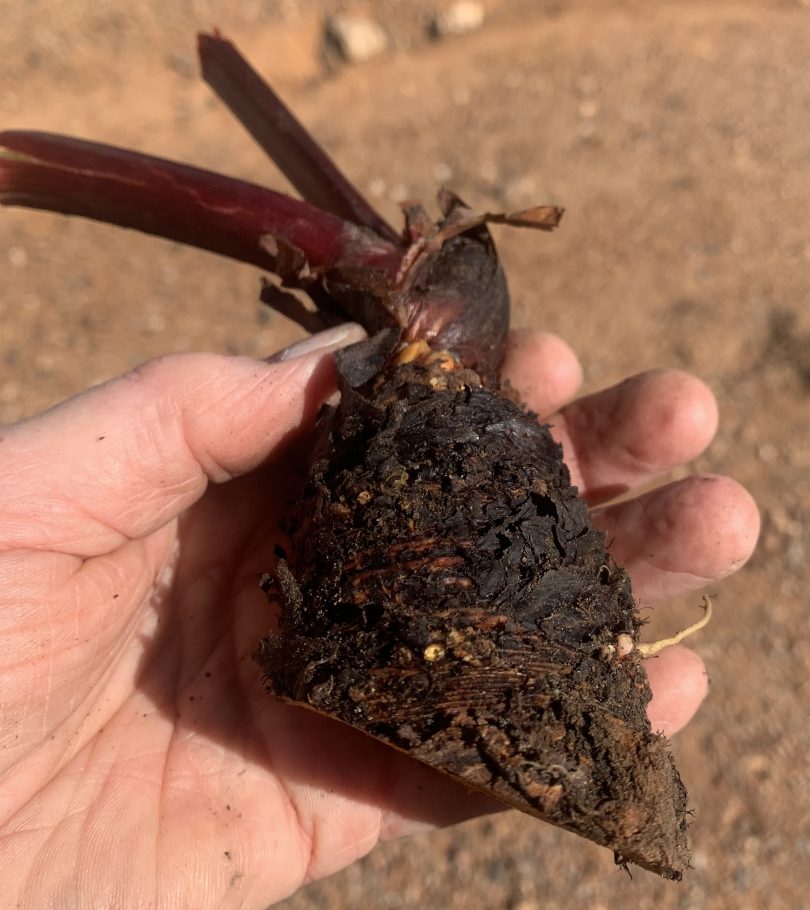
Trim old rhubarb roots with a sharp spade edge.
These cuttings can simply be planted straight back into the garden but they can also be put into pots for an extra bit of care over winter. After weeding and feeding, existing plants will benefit from a heavy mulch of whatever you can lay your hands on – spoiled straw or hay, cardboard, it doesn’t really matter.
Never over pick your rhubarb plants, especially in the autumn when they are replenishing their roots for winter. However, if your plants are still looking good it is not too late to get a light harvest. You do it by running your thumb down the top side of large, outside, stems reaching into the very centre of the plant. A sharp sideways twist will remove the stem cleanly without damaging the plant. The best stems are hard when you squeeze them. Leave soft stems and leaves under the plants to add to the mulch.
What I’m Eating:
- Beetroot
- Broccoli
- Cabbages
- Carrots
- Chinese greens
- Garlic
- Kale
- Onions
- Parsley
- Parsnips
- Potatoes
- Pumpkins
- Radishes
- Rhubarb
- Salad greens
- Silverbeet
- Snow peas
- Spring onions.
What Seeds I’m Planting:
- Broad Beans
- Peas
- Onions (early varieties Hunter River Gold, Early Flat White, Violetta Lunga)
- Salad Mix (under cover from frosts)
- Winter Green Manures (field peas, rye corn, oats, vetch, lupins, mustard).
Joyce Wilkie has farmed vegetables and free-range poultry at Allsun Farm, Gundaroo for decades. Educating people about where their food comes from and teaching them how to grow it is her abiding passion.












